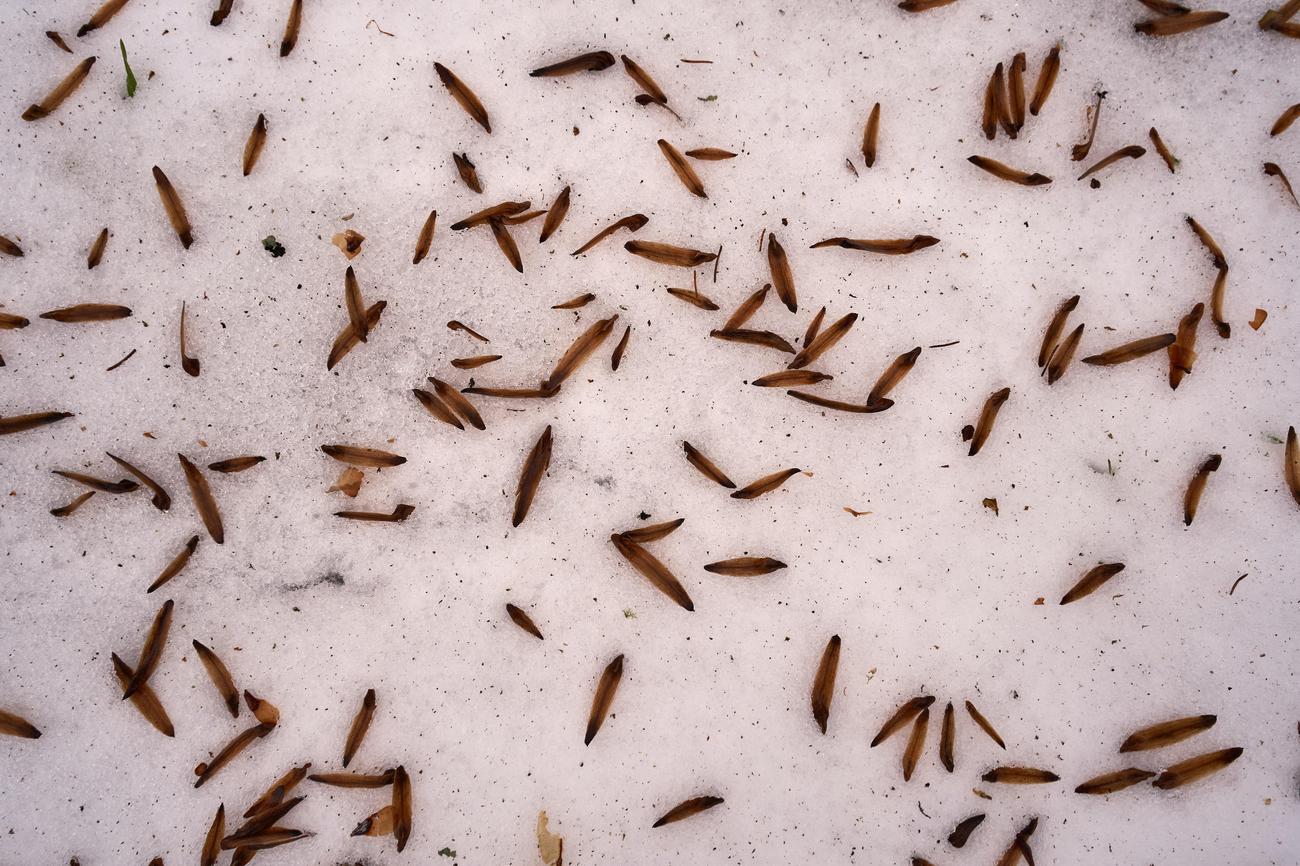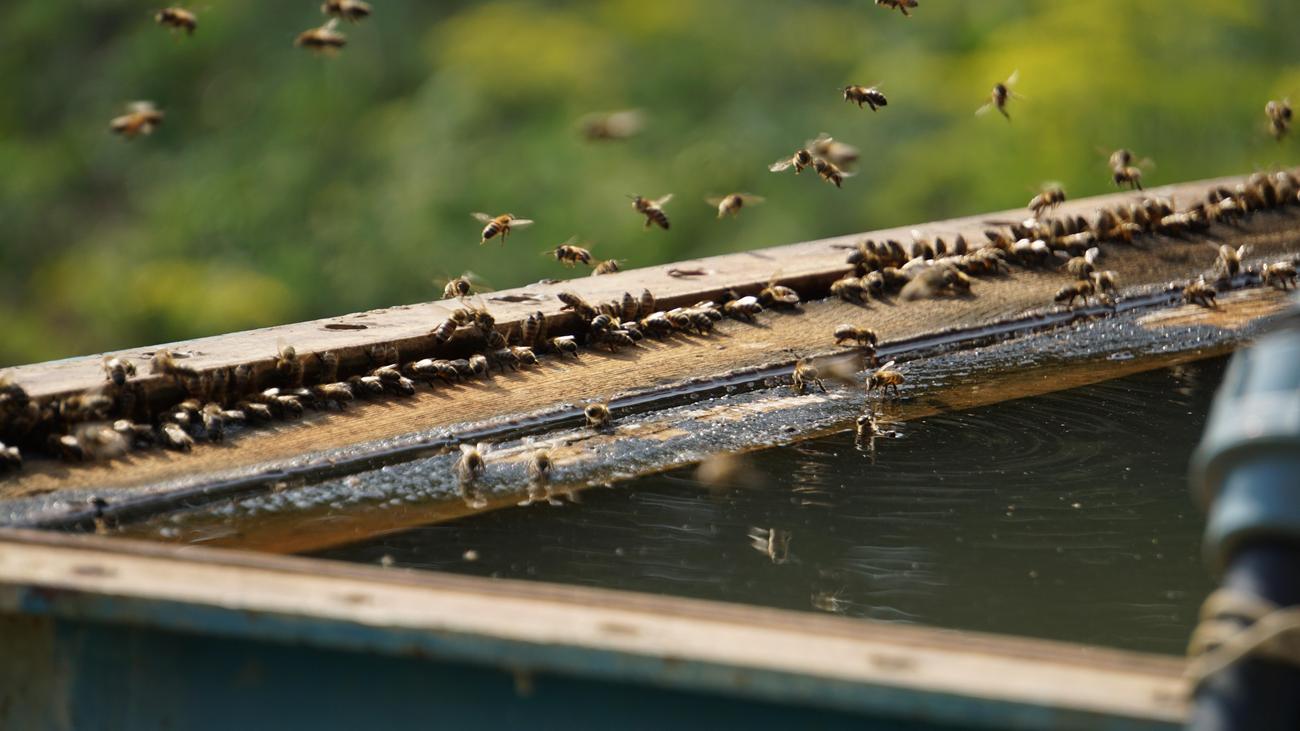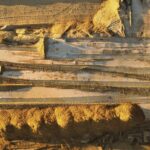Prepare to be amazed as we delve into the fascinating world of termites, those tiny yet incredibly influential creatures that have captured the attention of biologists and nature enthusiasts alike. In this article, we will explore not one, but two captivating facts about these industrious insects: their unique ability to digest cellulose with the help of microorganisms in their guts, and the surprising phenomenon of new kings and queens taking to the sky in flight. Get ready to be astounded by the intricate lives and astonishing capabilities of termites that often go unnoticed. Let’s uncover the secrets of these influential creatures together!
10 Fun Facts About Termites
Termites, those tiny creatures hidden beneath our feet, hold astonishing secrets that often go unnoticed. Let’s delve into their fascinating world and unearth ten fun and jaw-dropping facts about these influential creatures.
Termite Fact #1: Nature’s Decomposers
Did you know that termites are expert recyclers? These small powerhouses feed on dead plant matter like wood, leaves, and grass, breaking it down and enriching the soil in the process. Their ecological significance in maintaining the balance of ecosystems cannot be understated. As they munch away, they play a vital role in the circle of life.
Quote:Nature’s little decomposers, termites tirelessly work to recycle organic matter and enrich the soil, ensuring the continued fertility of our planet.
Termite Fact #2: Mighty Colonies
Termites are social insects, living in colonies that range from thousands to millions of individuals. These bustling communities have their own hierarchy and division of labor. From workers to soldiers and reproductive individuals, each plays a crucial role in the survival and prosperity of the colony. Together, they create impressive architectural marvels encompassing intricate tunnels and chambers.
Termite Fact #3: Mistaken Identity
Don’t be fooled! Termites are often mistaken for ants due to their similar size and shape. However, upon closer inspection, their distinguishing features become apparent. Termites have straight antennae, a broad waist, and equal-sized wings, while ants have elbowed antennae, a distinct waist, and different sized wings.
Termite Fact #4: Lifespan Champions
When it comes to longevity, termites reign supreme among insects. These remarkable creatures can live up to 15 years, exceeding the lifespan of many other insects by a significant margin. Their remarkable durability ensures that generations of termites can carry out their vital tasks year after year, sustaining their colonies’ existence.
Termite Fact #5: Non-Stop Workaholics
While we humans take breaks and enjoy our downtime, termites work tirelessly around the clock, 24 hours a day, seven days a week! Their unwavering dedication to their responsibilities is truly awe-inspiring. Whether it’s foraging for food or constructing and maintaining their nests, termites never seem to rest.
Termite Fact #6: Close Cousins with Cockroaches
Genetically speaking, termites are close cousins with cockroaches. Both belong to the order Blattodea and share a common ancestor that existed millions of years ago. So, while you may cringe at the sight of a cockroach scurrying across your kitchen, remember that termites are part of the same family tree.
Termite Fact #7: Egg-laying Queens
When it comes to reproduction, termite queens are absolute champions. A single queen termite can lay up to a staggering 30,000 eggs per day. This astonishing feat ensures the continual growth and expansion of their colonies. These queens, often larger and longer-lived than other termites, remain the backbone of the colony and the driving force behind its success.
Termite Fact #8: Communicators Extraordinaire
Though they lack the ability to speak, termites have developed intricate communication methods. They rely on a combination of pheromones, vibrations, and sounds to convey vital information to their fellow colony members. Whether it’s a warning of danger or guiding others to a food source, termites have adapted to an astonishingly complex system of communication.
Termite Fact #9: Silent Architects
As termites construct their elaborate nests, they showcase their exceptional architectural prowess. With precision and efficiency, they create intricate tunnel systems, ventilation shafts, and chambers, all tailored to their specific needs. These silent architects shape their environment, building structures that withstand the test of time.
Quote:Silent architects of the underground, termites craft intricate nests and tunnel systems, showcasing their remarkable architectural talents.
Termite Fact #10: Earth’s Silent Heroes
While termites may not receive the recognition they deserve, they are essential components of our ecosystems. Their tireless efforts as decomposers, recyclers, and architects contribute to the overall health and balance of nature. By better understanding and appreciating these tiny creatures, we can deepen our connection with the intricate web of life that surrounds us.
Let’s celebrate and marvel at the wonders of termites, those influential creatures that have quietly shaped our world for millions of years.
Quote:These tiny heroes silently shape our ecosystems, reminding us that even the smallest creatures can have a significant impact on our world.
Remember, termites are more than just pests. They are nature’s unsung heroes, contributing to the intricate tapestry of life with their remarkable abilities and astonishing behavior. With a newfound appreciation for these creatures, we can continue to explore and uncover even more fascinating facts about their captivating world.
Termites may seem like small and insignificant creatures, but they play a crucial role in Earth’s ecosystem. If you want to uncover some fascinating and surprising facts about termites, then you’re in luck! We’ve compiled a list of 10 fun facts about termites that will blow your mind.
First up on our list is the important role termites play in the environment. Did you know that termites help to break down dead plant material and recycle nutrients? That’s right, these tiny insects play a big part in keeping our ecosystems healthy and vibrant.
If you’re curious about the hierarchy within a termite colony, you won’t want to miss our facts about queen termites. Discover how these incredible females lead and reproduce, shaping the destiny of the entire colony.
Looking for a quick and informative guide? Check out our termite fact sheet for a comprehensive overview of these intriguing creatures.
Ever wondered just how many termites can exist in a single colony? Find out the answer and be amazed by the sheer volume of termites that can coexist in one tiny mound.
But what about the global population of termites? Wonder no more! Uncover the surprising truth about how many termites there are in the world, and marvel at their widespread presence.
Last but certainly not least, delve into the world of termite mounds. Learn about their incredible construction and the purpose they serve within termite societies.
So, if you’re itching to learn more about termites and their fascinating world, be sure to click on the following links:
- List 9 Important Of Termite
- Queen Termite Facts
- Termite Fact Sheet
- How Many Termites Are In A Colony
- How Many Termites Are There In The World
- Termite Mound Facts
Unveil the secrets of these incredible creatures and prepare to be amazed!
2. Termites Digest Cellulose With the Help of Microorganisms in Their Guts
Termites, those tiny creatures that often go unnoticed, have a fascinating and crucial role in the natural world. One of their most astounding capabilities lies in their ability to digest cellulose, a carbohydrate found in wood, with the help of microorganisms in their guts. Without these microbes, termites would be unable to break down the tough cell walls of plant material and derive nutrition from it. Let’s delve deeper into this incredible symbiotic relationship between termites and their gut microbiota.
The termite gut is home to a diverse community of microorganisms, including both bacteria and protozoa. Each group plays a specific role in the digestion of cellulose. In lower termites, both bacteria and protozoa work together to break down cellulose, while in higher termites, bacteria alone handle the task. This difference in gut composition reflects the evolutionary adaptability of termites, highlighting their ability to thrive in various ecological niches.
Cellulase, the enzyme responsible for breaking down cellulose, is found not only in the termites’ salivary glands, but also throughout their gut. This widespread distribution of cellulase ensures efficient digestion of cellulose and further emphasizes its importance in the termites’ diet. Just like ruminants, such as cows, termites have evolved a mutualistic relationship with their gut symbionts, illustrating the power of symbiosis in the natural world.
The association between termites and their gut microbes is vital for their survival and ecological impact. Termites act as essential decomposers in ecosystems, breaking down plant material and releasing nutrients back into the soil. Without this process, nutrient cycling in ecosystems would be disrupted, leading to imbalances and potential ecological consequences. Termites unknowingly play a significant role in maintaining the health and stability of nature.
It’s truly awe-inspiring to think about the immense impact these tiny creatures have on our environment. From their ancient origins dating back over 130 million years to their unique behaviors, such as feeding on each other’s feces and exhibiting parental care, termites continue to surprise and fascinate us. They are not just tiny insects, but influential architects and engineers of their own intricate tunnel systems.
Imagine if we humans could harness the power of their gut microbiota to efficiently break down cellulose. It could revolutionize various industries, such as biofuel production and waste management. Termites have unlocked the secrets of cellulose digestion, and there is still so much we can learn from these incredible creatures.
In conclusion, termites are masters of cellulose digestion, thanks to the diverse array of microorganisms in their guts. The symbiotic relationship between termites and their gut microbes highlights the intricacies of nature’s design and the interconnectedness of different organisms. By understanding and appreciating the astonishing capabilities of termites, we can gain a deeper admiration for the complexity and wonders of the natural world.
“Termites have perfected the art of cellulose digestion by enlisting the help of microorganisms in their guts, showcasing the power of symbiotic relationships in nature.”
9. New Kings and Queens Can Fly
When it comes to termites, there’s much more than meets the eye. These tiny creatures hold incredible secrets, and one of the most fascinating aspects of their lifecycle is the flight of the new kings and queens. You might be surprised to learn that not all termites can fly, but the future rulers of a colony, known as alates, have the remarkable ability to take to the skies in search of a mate.
Picture this: a swarm of alates emerges from their home colony, their delicate wings ready to carry them on an important mission. But what drives them to fly? Their ultimate goal is to find a partner and establish a new colony together. These alates journey into the great unknown, seeking a promising location to start their royal reign. It’s a moment of excitement and opportunity for these future termite queens and kings.
[Quote] Just like a game of chance, these new kings and queens embark on a thrilling gamble, relying on the vastness of their flight to increase their odds of finding the perfect match and a suitable place to call home.
Now, let’s talk about the royalty within termite colonies. While termites queens are well-known for their immense size and significance within the colony, the kings are less understood. In fact, their role remains a mystery to scientists. But one thing is clear: the kings definitely play second fiddle to their queens, who dwarf them in both size and importance.
[Quote] Despite being overshadowed by the queens, the kings have their own unique significance in the complex social structure of termite colonies. However, their precise contribution remains a captivating enigma that researchers are still unraveling.
Interestingly, termite queens cannot fly themselves. They rely on the alates, the future queens, to take care of the mating process. The alates, with their wings ready for flight, can be seen as the future queens-in-waiting. It’s a crucial moment in their lives as they take to the air, seeking their match and ensuring the continuity of their lineage.
[Quote] Like divine emissaries, these alates carry the genetic future of their colonies as they soar through the vast expanse of the sky, ready to find their place in the world.
As we delve deeper into the astounding world of termites, we begin to uncover even more unique traits and adaptations. Did you know that termite queens have a significantly longer lifespan compared to termite kings? This intriguing fact sets them apart from other termites and highlights their distinct evolutionary journey.
[Quote] In the termite monarchy, it seems that the queens have truly mastered the art of longevity, outliving their king counterparts by a substantial margin. A testament to their remarkable resilience and tenacity.
While termites may be small, their influence on the world is immense. From their flight to their royal hierarchy, these incredible creatures continue to captivate us with their extraordinary lives. Keep exploring the hidden wonders of termites, and you’ll discover a whole new level of fascination within the insect world.
[Quote] In this intricate termite realm, there is always more than meets the eye. Let these stunning revelations about their flight and royalty serve as a reminder that nature’s intricacies are far grander than we can imagine.
Top 10 Fascinating Facts About Termites
[youtube v=”doRLVNRD3Gc”]
Social Structures of Termites
Termites are remarkable insects that live in highly organized colonies. These colonies can contain thousands or even millions of individual termites and are ruled by a queen and king. The division of labor within these colonies is strict, with different members performing specific tasks.
“Termites live in highly organized colonies with a strict division of labor.”
Longevity of Termite Queens
Termite queens have an incredibly long lifespan, with some living for several decades. This is quite impressive considering they are insects and is a testament to their resilience and adaptability.
“Some termite queens can live for several decades, which is quite impressive for insects.”
Tiny Eaters with Huge Impact
Although individual termites are small, they are responsible for significant damage over time. Termites slowly consume wood cellulose and other plant materials. It is their collective effort as a large termite colony that leads to substantial damage.
“Despite their small size, individual termites can cause significant damage over time.”
The Role of Gut Microbes
Termites have a unique way of digesting cellulose. They rely on a specialized community of microorganisms in their guts, including bacteria and protozoa, to break down cellulose into nutrients they can absorb.
“Termites rely on a specialized community of microorganisms in their guts to break down cellulose.”
Remarkably Energy Efficient
Termites are incredibly efficient creatures when it comes to energy consumption. They produce very little heat as a byproduct of digestion, making them well-suited for living in large colonies without overheating.
“Termites are remarkably energy efficient creatures.”
Nocturnal Behavior
Most termite species are nocturnal, meaning they are most active at night. This behavior helps them avoid predators and maintain a more consistent body temperature.
“Most termite species are nocturnal, ensuring they avoid predators and regulate their body temperature.”
Blind Workers and Their Communication Methods
The majority of a termite colony is made up of blind worker termites. These workers navigate dark underground tunnels and rely on pheromones and tactile communication to coordinate their activities.
“Worker termites, the majority of a colony, navigate dark tunnels and communicate through pheromones and tactile signals.”
Diverse Species and Ecosystem Role
There are over 2,000 different termite species worldwide, occupying a wide range of ecosystems from forests to deserts. Termites play a vital role in recycling dead and decaying plant material, breaking down cellulose, and releasing essential nutrients back into the soil, promoting plant growth.
“Termites play an essential role in ecosystem balance by recycling plant material and promoting plant growth.”
Mutualistic Relationships
Some termite species have mutually beneficial relationships with other organisms. For example, certain termites have a symbiotic relationship with fungi that help them digest wood, while others have relationships with ants that provide protection and food.
“Certain termite species have symbiotic relationships with fungi and ants, benefiting both parties.”
Defensive Mechanisms and Economic Impact
Termites have developed various defensive mechanisms to protect their colonies from predators, such as secreting toxic chemicals, emitting warning signals, or building complex tunnel systems. However, termites can also be destructive pests, causing significant economic damage globally by infesting and damaging structures.
“Termites have impressive defense mechanisms, but can also be destructive pests.”
In conclusion, termites are fascinating insects with unique social structures, incredible adaptability, and a vital role in ecosystems. Understanding their behavior and importance can help in developing effective termite control methods and appreciating the wonders of the natural world.
“Termites are fascinating creatures with unique social structures and vital ecosystem roles.”

FAQ
1. How do termites digest cellulose?
Termites rely on microbial symbionts in their gut to digest cellulose, an important carbohydrate found in wood. The termite gut contains a diverse community of microbes, including bacteria and protozoa, that work together to break down cellulose.
2. Do all termites have microbial symbionts in their guts?
Lower termites have both bacteria and protozoa in their gut, while higher termites usually only have bacteria.
3. What is the role of cellulose in termites’ digestive system?
Cellulase activity, which is responsible for breaking down cellulose, is found in the salivary glands and throughout the gut of termites. The symbiotic relationship between termites and their gut microbes is similar to the relationship between ruminants (such as cows) and their gut microbes.
4. How do termites benefit ecosystems?
Termites are important decomposers in ecosystems, as they help break down plant material and release nutrients back into the soil. They also recycle dead and decaying trees and improve soil as they tunnel.
5. Can termites fly?
Yes, new reproductive termites, called alates, are winged so they can fly and leave their home colony in search of a mate. Each royal pair of king and queen emerges from a swarm of alates together and finds a new place to start a new colony.
- Unlock Filipino Culture: A Deep Dive into Traditions and Practices - April 23, 2025
- Unlock Spanish Culture: Insights & Opportunities Now - April 23, 2025
- White Spirit Uses & Substitutes: A Deep Dive for Pros & DIYers - April 23, 2025
















